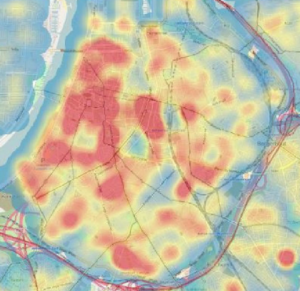The growth of e-commerce is accompanied by an increasing distribution of parcels in cities resulting in externalities like traffic congestion or emissions. As a consequence, different delivery concepts like bike deliveries or delivery points have been suggested. Most companies will only accept these changes, if they do not result in higher cost of delivery. However, it is difficult to predict the impact of a certain delivery concept in a certain city. This lead to the research question of a paper by Arnold et. al. (2018), how different delivery scenarios for a certain area can be assessed and compared, especially if some of them have not been implemented yet.
Methods
Using a case study, the researchers demonstrate how the effects of different delivery concepts can be quantified with the help of a simulation study. They take care to accurately model the delivery processes and utilise a real-world dataset and realistic cost values. On the basis of these inputs, they simulate and analyse the current state-of-the-practice in the distribution of e-commerce goods in Antwerp (B) and compare it to possible `what-if’ scenarios.
Results
The results highlight that the investigated delivery concepts can benefit either the companies or the quality of life in the city. Operational costs of companies can be reduced by stimulating customer self-pick-up, while externalities decrease with the implementation of a cargo bike distribution system. The researchers demonstrate that both operational and external costs can be minimised, if involved stakeholders from industry and the public look for sustainable delivery solution jointly.
Read the full paper here:

